This travel blog is a way for us to remember our travels better, and hopefully provide useful tips to others along the way. Any proceeds from posts with this disclaimer will go to the charity of choice for the given country we're traveling in. After some researching we've picked Vietnam Relief because of their focus on children and good results.
Previous posts:
Adventures of Cat Ba
Cat Ba is a small island, but there's plenty to experience. If you find yourself on Cat Ba, definitely try and experience everything described below.
Cat Ba National park
We booked a trip to the national park almost immediately on arrival - a trip we recommend all nature lovers and hikers also book. The trip would be an 18km hike through the jungle, of which 13km is in the forest and up to the mountaintop, and the next 5 an easier walk through some local communities after lunch.
Next morning, a rickety old van held together by glue, rust and hope picked us up, already full of other visitors. Reaching the gate of Cat Ba national park, we noticed it looked old, almost abandoned.
The smarter members of the group bought water at the entrance, preparing themselves for the announced 6 hour hike and we were led into the jungle by two guides surrounding the group to make sure there aren't any stragglers. The national park is a jungle in the true sense of the word and solo hikers can get lost.
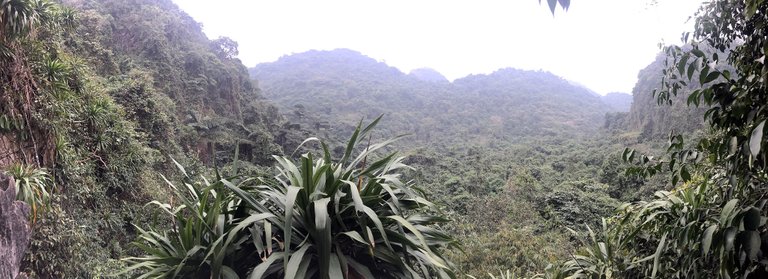
Traversing hundreds of both man-made...

... and natural stairs made of rock, root, and dirt, we passed by a frog-less and water-less Frog Lake covered with footprints of other animals...
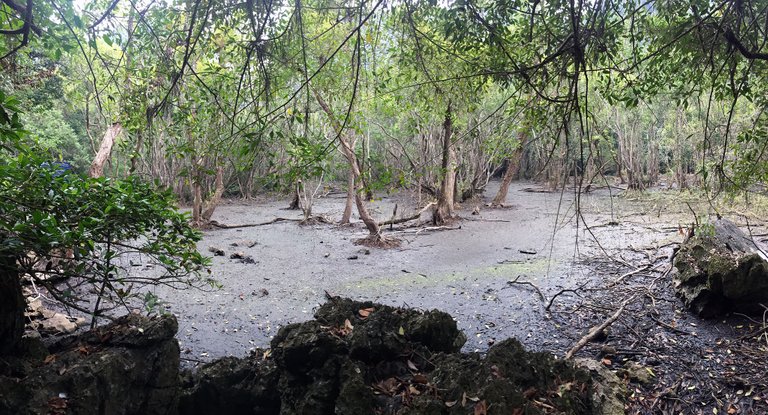
... and fought our way through many a giant plant.
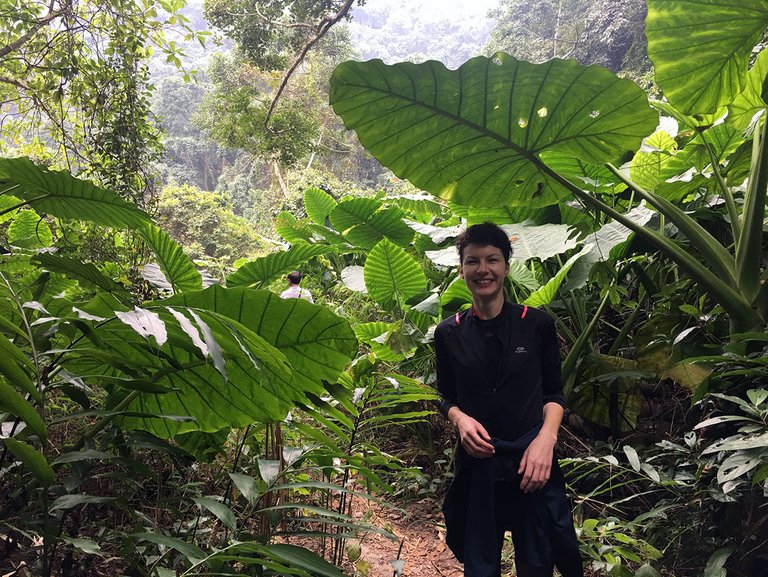

Our guides were silent, agile, and helpful, pointing to good, dry footholds. They didn't talk much about the plants and trees we were passing, which was a shame given that the island is home to a unique kind of tree, the Cay Kim Giao. According to legend, this tree was the only type of timber used for making chopsticks for kings as its color turned to black as soon as it touched poison.
We also saw absolutely no animals other than a giant black squirrel despite the area being supposedly fauna-rich (30+ species) - the golden-headed langur is allegedly at home in this jungle - but they did show us a cave the villagers used during the war to hide. The cave, the name of which we never found out but isn't among the popular ones, is actually home to 2km of underground tunnels leading into the village. It used to be full of bats and is even now completely filled with empty snail casings covering the floors and walls - likely the prey of many bats.
Unfortunately, we weren't equipped for spelunking, so we continued along the normal hiking trail.
One very steep hike later...

we reached the top, and there we were greeted by a breathtaking view of the Viet Hai village and its surroundings.
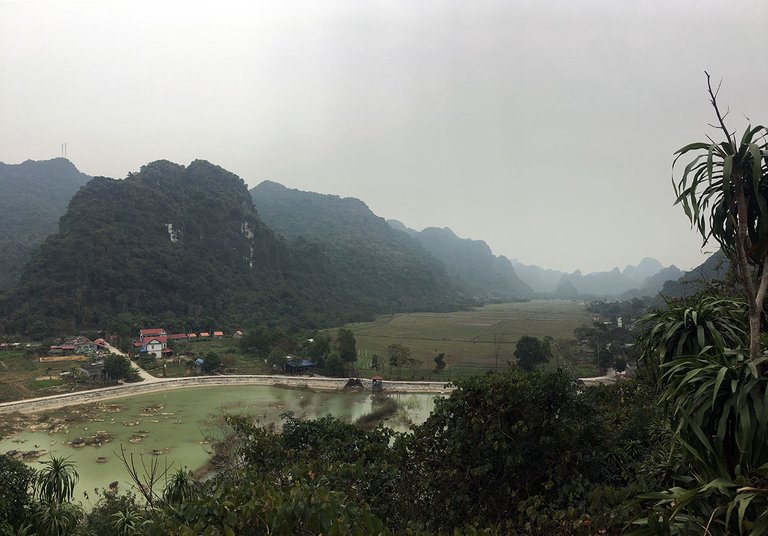
It was there that we had lunch...

... and the promise of being given bicycles was fulfilled - to two people. Originally, we were all supposed to get bicycles and ride back to the harbor, but for some reason only two people got them while the rest of us took another 5km hike through the village - home to many obviously poor but happy people.
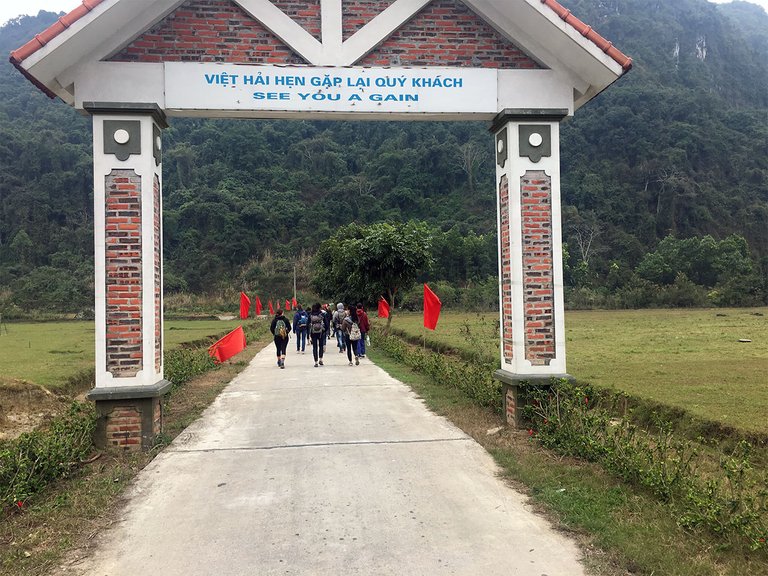
We were also promised bodies and thousands of children, alas...
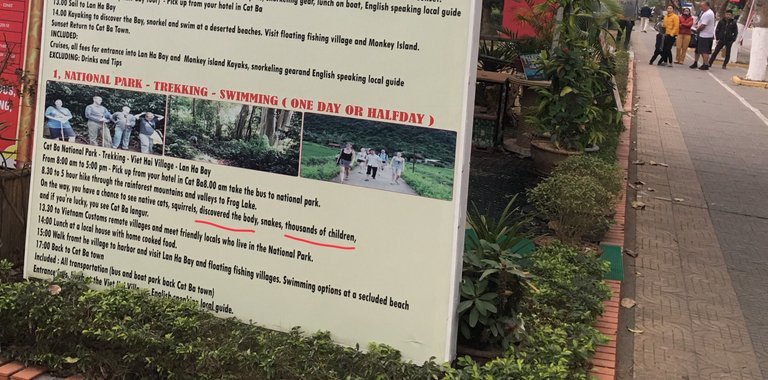
The harbor had a boat waiting for us which took us through the famous Cai Beo floating village.
Floating Village
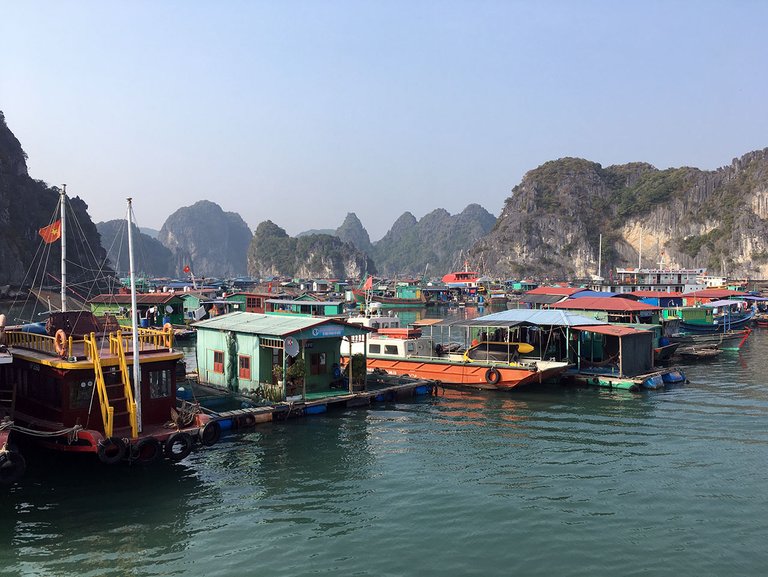
The floating village is a collection of shacks and boats tied together next to Cat Ba bay, forming a small, almost post-apocalyptic-looking commune. Each house barely 20 square meters in surface area with another 10 or so surrounding it for walkways.
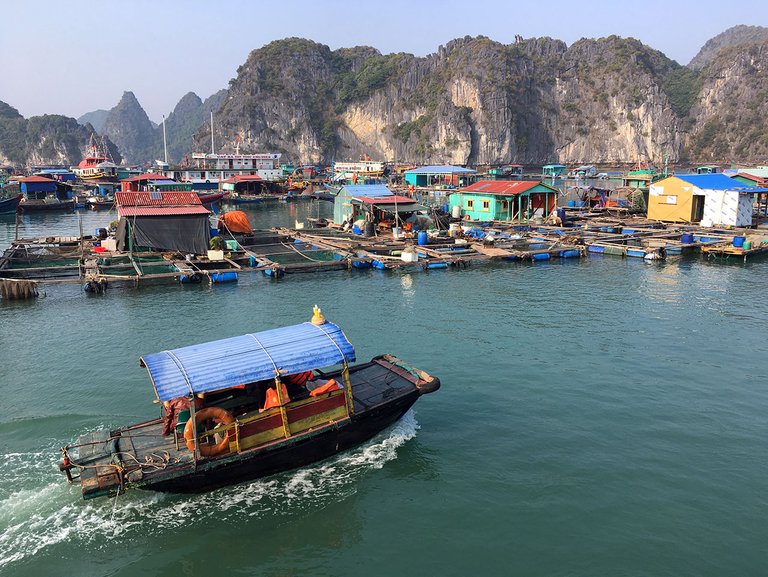
Strangely enough, almost every house had at least one dog faithfully keeping watch, or sleeping cuddled up into a fishnet. Some had chickens, too, and most had pools in between walkways with nets inside them where they kept fresh fish.
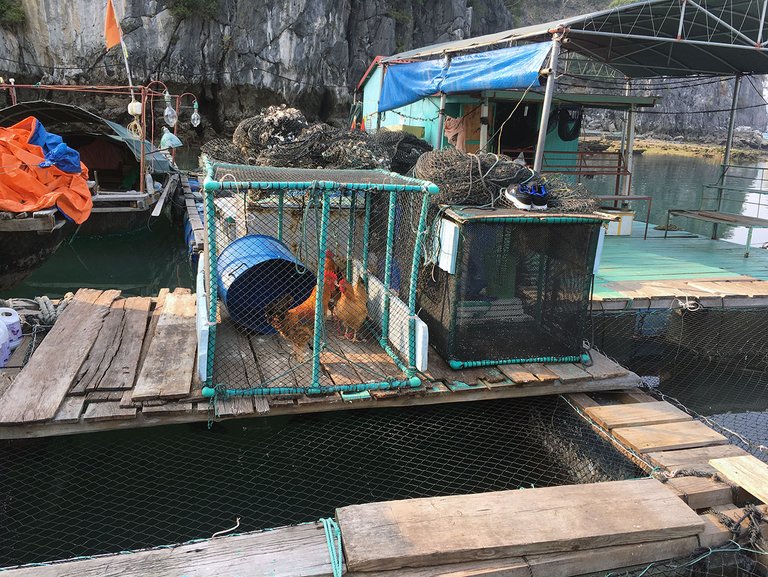
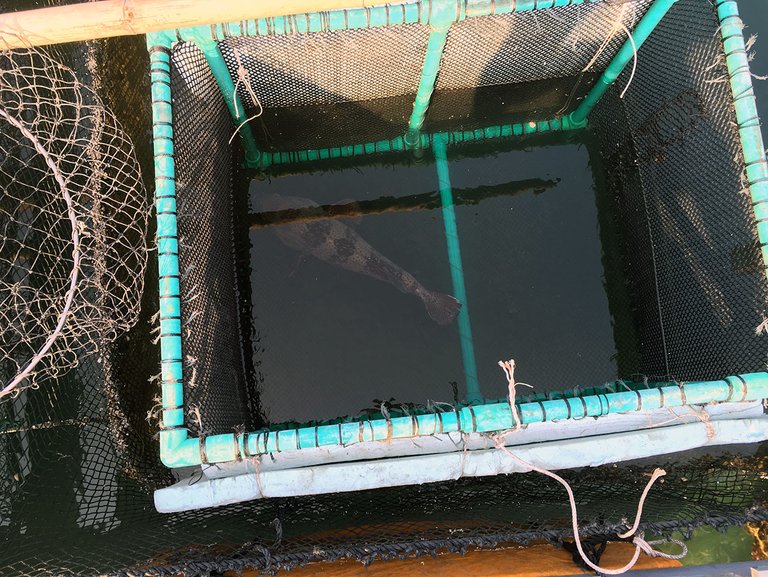
The people there lead interesting, isolated lives and don't seem unhappy with their situation at first glance - they have everything they need in their floating bubble, and for everything else there's motorboats or rowboats they can use to get into the harbor for supplies, trade, or just setting their feet on solid ground for a change.
But where does the poop go?
Monkey Island
Our next adventure was a boat trip to Lan Ha and Halong Bay. We were picked up the next day by a similar vehicle as the day before, but in a much better condition.
The trip started with a very energetic guide called Ten straight out of the Robin Williams Peter Pan movie explaining what we would be doing, and then captaining us away into the murky waters of Halong Bay. The boat was basically a double-decker bar on water, offering snacks, drinks, and relatively comfortable indoor seating and outdoor padded deck chairs to enjoy the sights on.

We covered a big part of Lan Ha Bay and reached the "border" with the more famous Halong Bay, upon which our guide simply recited the old, traditional Vietnamese saying: "Same same". The bays are essentially part of the same body of water.
We drifted around and in between 300 or so karst islands in the bay, including the famous Goldfinger rock:
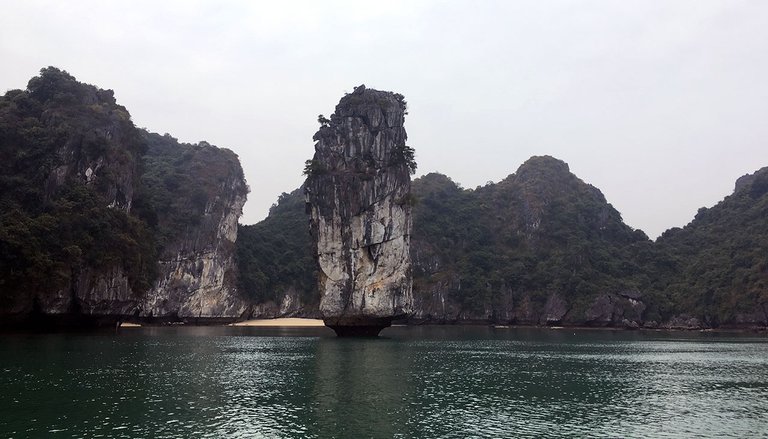
The first "interactive" part of the trip was an excellent kayaking adventure through enclosed lagoons of wild nature, following natural caves from one into the other.

photo courtesy of Morrison Kramer & co.
After enjoying the wilderness in this special way and tiring ourselves out a little bit, a veritable feast was waiting for us on the boat.

The trip's last stop was Monkey Island (no, not the game) - an island in the bay known for an off-the-charts population of extremely outgoing monkeys, all of whom will approach you and - if you show them food - shamelessly climb you and attempt to grab it.
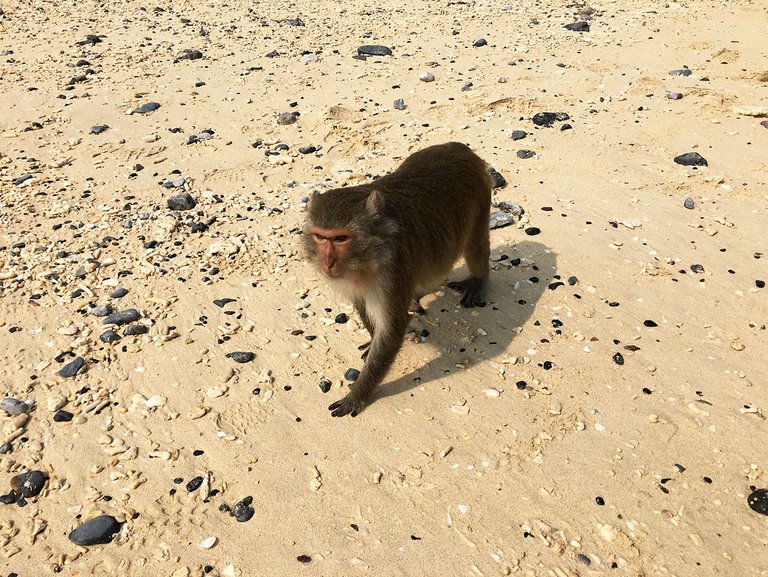
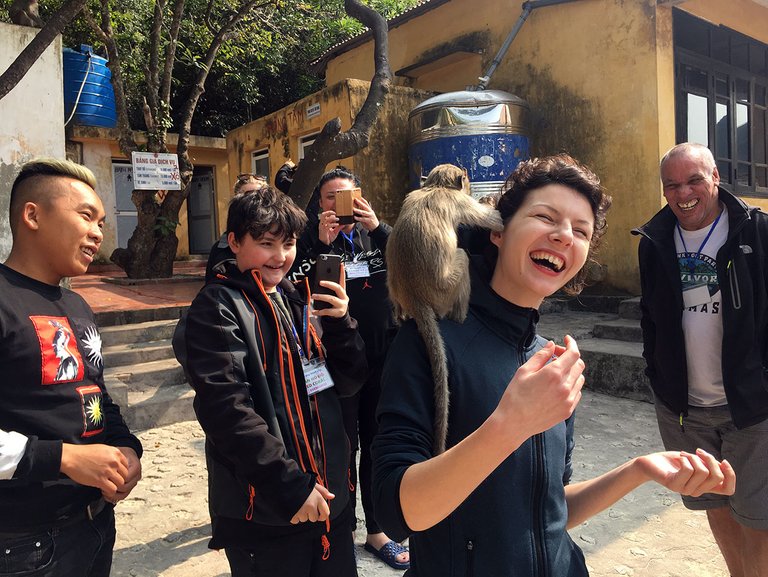
It was on Monkey Island that we first saw a true, tropical sun. The clouds dispersed somewhat and brightness increased by 50% in under 30 seconds, turning the beach into a scorching hot swimming paradise.
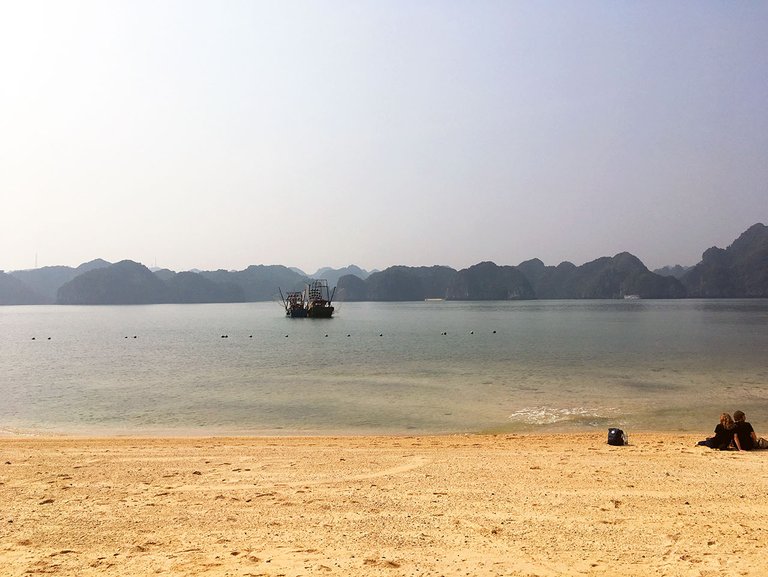
Rather than swim, though, we opted to climb the island's top hill for some epic views, and we weren't the only ones there.
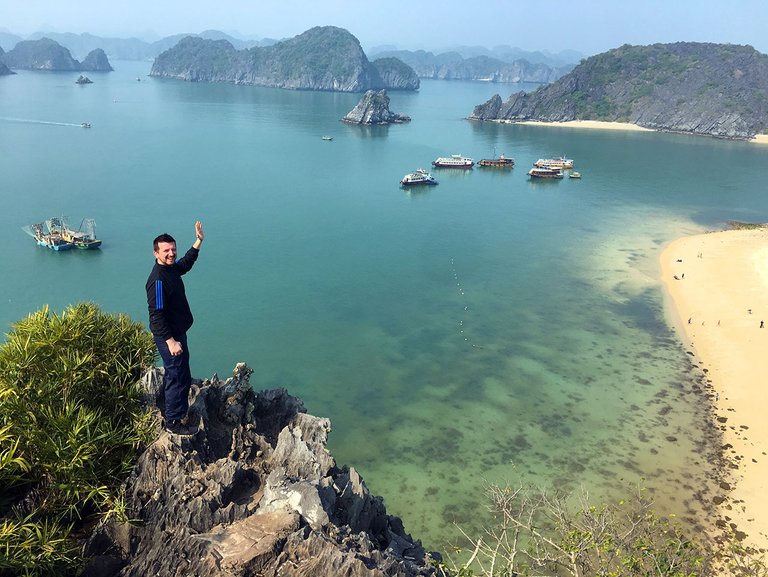
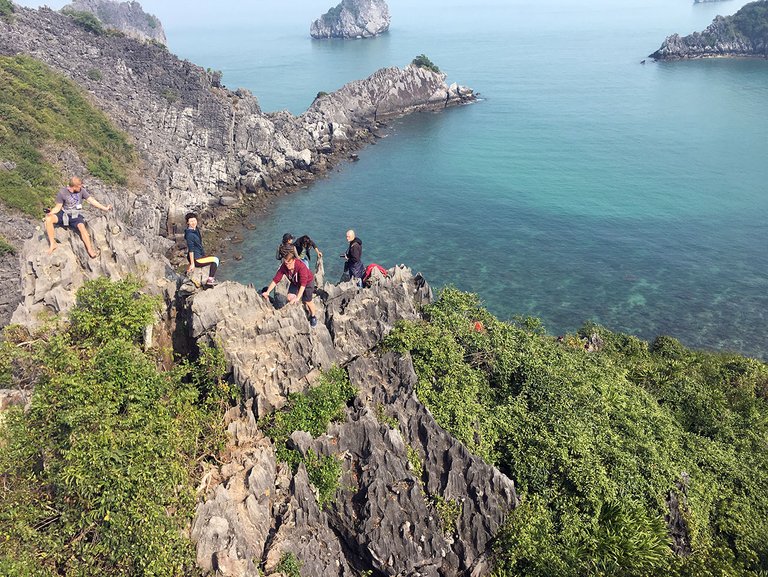
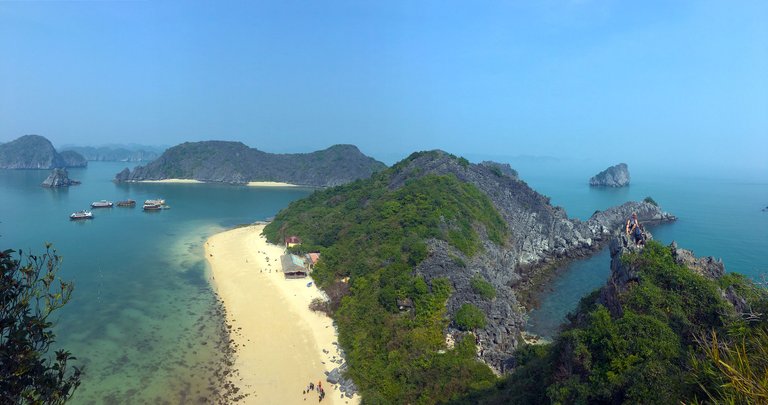
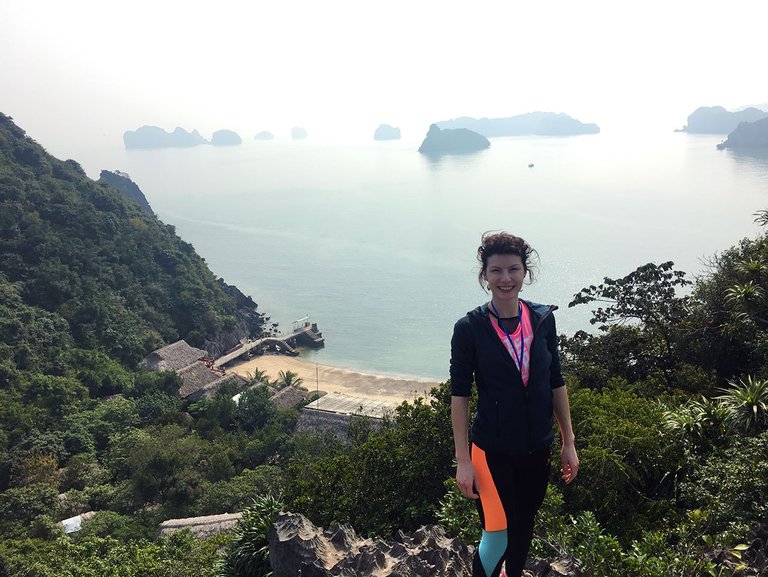
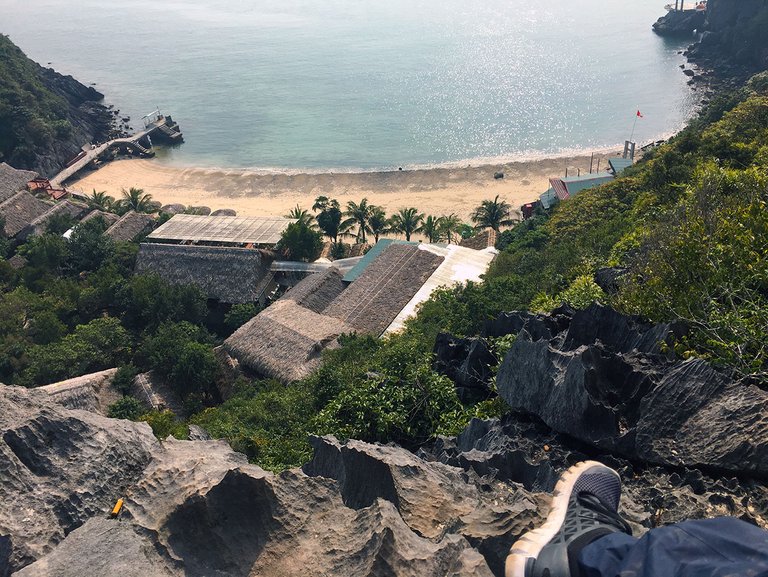
We wholeheartedly recommend taking this trip (many agencies and hotels offer it) if you find yourself on Cat Ba.
Cannon Fort
The last exploration adventure on Cat Ba was the Cannon Fort. As per Lonely Planet:
The tunnels and gun emplacements here were first installed by the Japanese in WWII, but were also utilised by the French and Vietnamese during subsequent conflicts.
The Cannon Fort can be reached from downtown on foot, or by motorbike. It's a warm and not too intense hike of some 40 minutes to the top. While a bit too touristy, the views were still quite amazing - you get to see all of Cat Ba's sides from the various tops, plus some history.

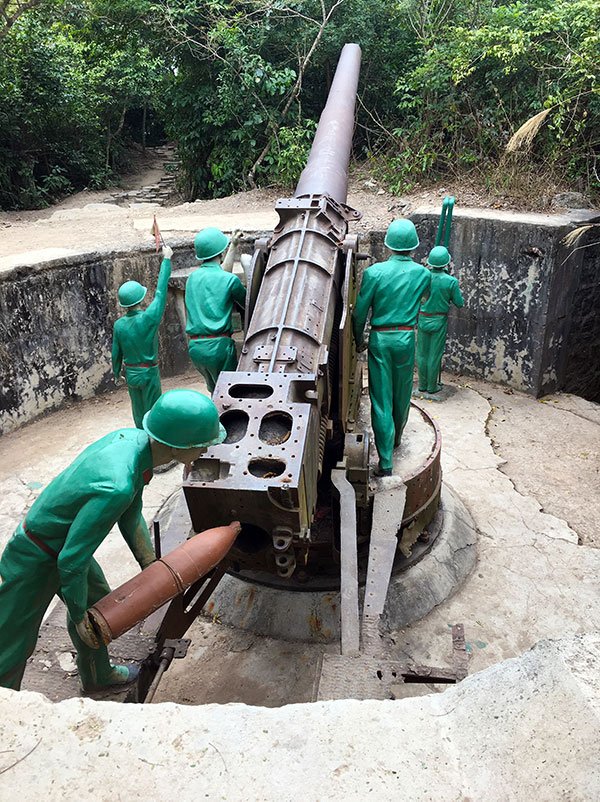

The adventures on Cat Ba island were a nice teaser of what was to come throughout the rest of our trip, and all in all we're extremely glad that this is where our journey began.
Did you really go 18 km through the jungle by foot? You got some epic views there!